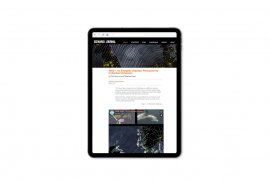2050 — An Energetic Odyssey

A limited imagination of desirable futures and ways to get there can also stand in the way of the broader energy transition. ‘2050 – An Energetic Odyssey’ was an attempt to use the UFS insights to create a ‘boundary object’ that would enable a new coalition of actors to push for a radical transition to renewables on the North Sea.
2050 – An Energetic Odyssey was a classic example of ‘transdisciplinary research’ in which academics, designers, policy makers and stakeholders collaborated to develop a narrative of transition. It led to a 8x5 meter floor installation showing a successful transition to renewables, completed in 2050.
Hajer & Pelzer describe and analyse how the installation functioned as ‘boundary object’ in a broader dialogue between public and private parties. We see the Energetic Odyssey as one of our key successes, showing how an alternative way of mobilizing science can facilitate policy breakthroughs.
The installation ‘2050 – An Energetic Odyssey’ was one of the eye-catchers at the 2016 International Architecture Biennale Rotterdam and was subsequently shown at many different places.



